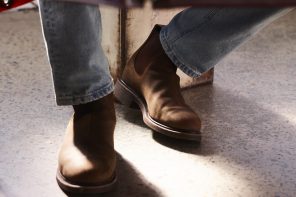Ane Crabtree was first introduced to the world of costume design when she began feeling dissatisfied with her existing work. “After being in fashion for a time, and being completely enamoured of it, I began to feel a bit bored. I began to become inspired by real folks on the street: butchers in the meat market, homeless people, a certain kind of taxi driver, the Fifth Avenue doyennes dressed to the nines.” This inspiration drove Crabtree to begin working in music videos, film and television. She has been a costume designer for some of the world’s most well-followed shows in including Westworld, The Sopranos and most recently the HBO hit show The Handmaids Tale.
While designing costumes for a specific series or set of characters is a deviation from developing to your own aesthetic, Crabtree expressed that she is still able to infuse herself into these designs. “I think it is very difficult not to let the personal find its way into the work,” she confessed. The now signature costumes found on the set of The Handmaids Tale, in particular, communicate the designer’s unique aesthetic perspective. “It just happens that The Handmaid’s Tale is very personal and visually simple and modern, as a tale. My own style of clean, modern, and sculptural, with an industrial bent, seems to flow symbiotically, with the costumes. The story was too personal for me not to include my personal style.”
“I think life happens the way in which it’s meant to. We often don’t understand this at the time."
Working as a costume designer, Crabtree communicated the importance of considering your filming locations. For The Handmaids Tale, there was an extreme variation in shooting conditions, and the designer's costumes needed to be both appropriate for the plot of the film and the actors. “I had to be judicious when choosing fabrics. We had to go from 100 degrees Fahrenheit to minus 30 degrees, all in one season,” she revealed. “I was going to use only wool gabardine, as that idea seems to fit with an aesthetic of industrial wear, but that would have killed my actors.” In the end, she was able to find a compromise which appealed to the variety of considerations she was facing, utilising a mixture of fabrics including wool, rayon blends, canvas and linen-cotton.
Being a part of this show was a highlight for Crabtree as she was able to connect with the series’ social commentaries. “It has influenced fashion, politics, and humour, and for that, I am most grateful,” related the designer. But she also shared that with any career highs come lows. “I wasn’t asked back to other seasons of a few TV shows.” However, the designer was insistent that while these moments may have appeared as setbacks, they turned out to be opportunities in disguise. “I think life happens the way in which it’s meant to. We often don’t understand this at the time. I think I overcame these moments by doing something greater, and within that, greater for my own purpose.”






